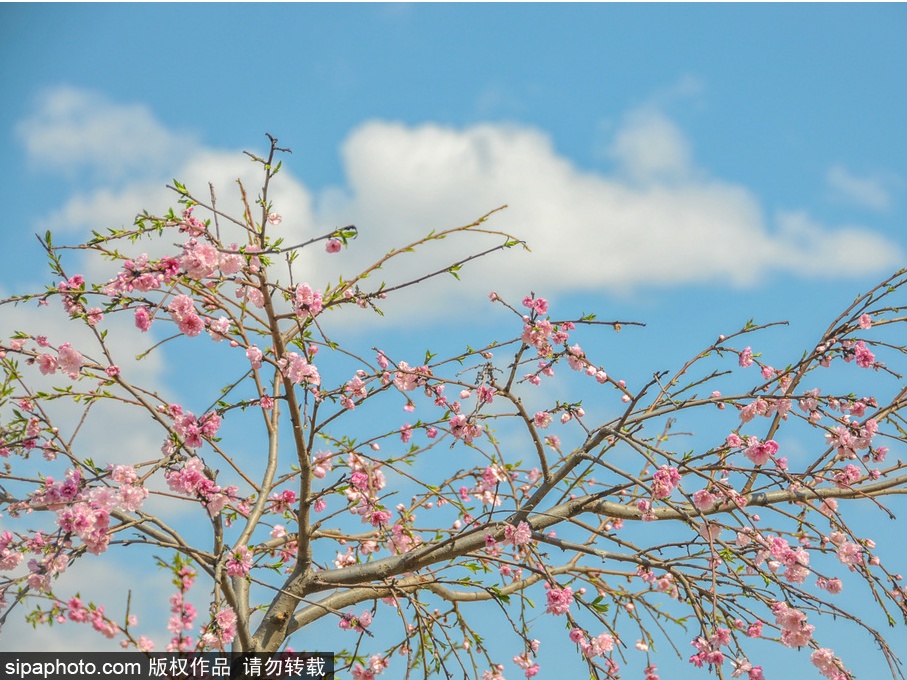
Beijing's Pinggu district is about to explode like fireworks with flowers. Erik Nilsson comes for the show but stays for the snow.
"Wow!" my 6-year-old exclaimed as we opened our yurt's door.
"It's amazing!"
It was. And unexpected.
We'd come to see the "sea of peach blossoms".
Instead, we witnessed a winter wonderland-in the spring.
Turns out, we'd arrived a couple of weeks too early for the best blooms. And the snow had arrived a couple of weeks too late for the season-that is, the blizzard blasted down during the Tomb Sweeping Day holiday in early April, a time typically celebrated for the most clement weather.
Still, we were enchanted.
We'd arrived in a village in Beijing's rural Pinggu district at night and awoke to discover the forested valley sheathed in white. The year's first flowers glistened in the ice that encased their petals like iridescent jewels.
Snowball fights ensued. Snowmen were built. And we conjured our own "blizzards" by grabbing the trunks of young pines and shaking the white stuff that pulled their branches downward so that it instead blustered down on our heads.
These are the magical moments parents hope to share with their children.
We boiled snow scooped from the top of our yurt for morning coffee.
Our family was surprisingly warm in the ethnic Mongolian-style tent.
The resort's owner insisted that's because it's covered with wool rather than cheaper fabrics. The property also hosts ancient buildings, and new cabins and villas arranged as if they were tossed down the mountain.
But we were seeking an experience more akin to camping.
Bonfires warmed the chilly evenings. Travelers huddled around the flames to drink and dine. Others thawed out while spinning chuan'r (skewers) between their fingers over charcoal barbecues.
Large woks sizzled outdoors above three nearby wood fires encased in what would otherwise appear to be a brick counter-a traditional outdoors-stove setup often used in rural China.
We were delighted to discover a web of hiking paths crowned the wild peaks that horseshoed our farmhouse resort. We didn't encounter a single soul during hours of trekking.
My wife and I planned to stage our (belated) Easter-egg hunt on one of the slopes. By astonishing coincidence, the kids and my wife saw a rabbit hopping through the woods nearby.
It was as if Mother Nature had conspired with Father Time to present both Old Man Winter and the Easter Bunny to our kids in rural Beijing.
Many visitors come to Pinggu not only for the peach blooms, which crescendo around the May Day holiday, but also for such natural wonders as the Flying Dragon Valley, Jinhai Lake and Jingdong Karst cave, which features subterranean boat rides that conjure images of the River Styx.
They also come to experience such man-made marvels as the Ming Dynasty (1368-1644) Bolitai Great Wall, the Huangsongyu Reservoir and the Pinggu Glass Sightseeing Platform, which is colloquially known as the "UFO" for its flying-saucer shape, among other glass skywalks. (Don't look down! Except, that's the point.)
And they arrive to enjoy such cultural attractions as the (small) peach museum, folk villages and the annual International Peach Blossom Music Festival that runs until May 30.
This year's event also features the Strawberry Music Festival from April 29 to May 1, when 117 rock acts from home and abroad will perform at one of China's largest such events. Over 100 shuttles will bring concertgoers from downtown, and 6,000 parking spaces have been arranged near the main venue, the municipal government's website says.
The festival also features such outdoor sports as bungee jumping, cycling and hiking.
But we'd journeyed to Pinggu for peace and quiet rather than concerts and crowds.
And that's exactly what we found-plus much more.
Indeed, it was still exciting in its own way-in no small part because of the surprise snow.
That said, we missed the "peach flower sea", in which 14,670 hectares of blooms blaze pink and white, which we'd witnessed years ago.
The orchards, too, resemble blizzards when their petals tumble like snowflakes.
And they, too, leave visitors saying, "Wow!"



